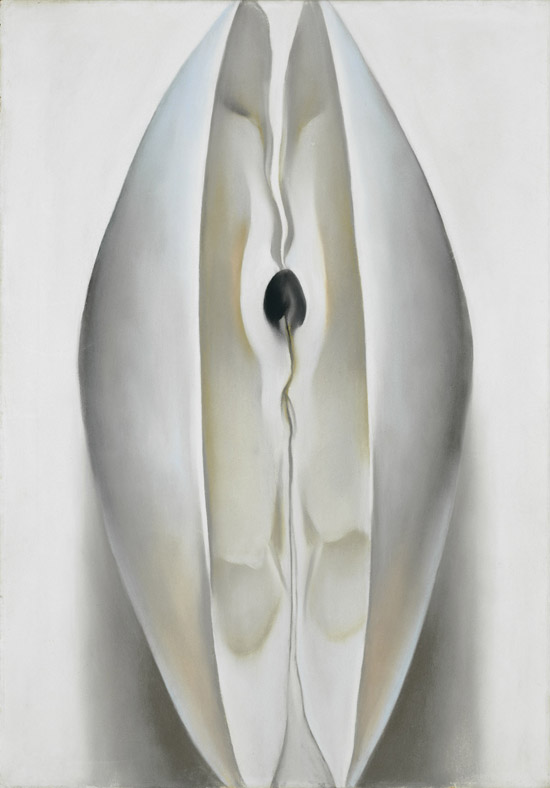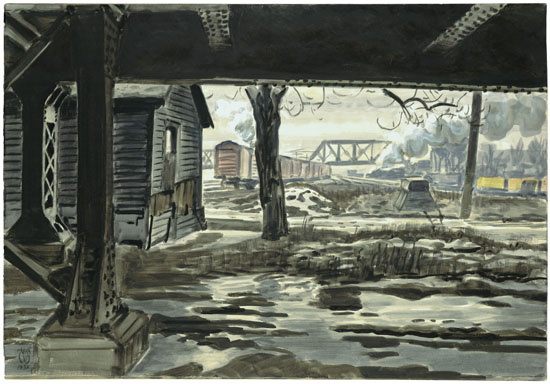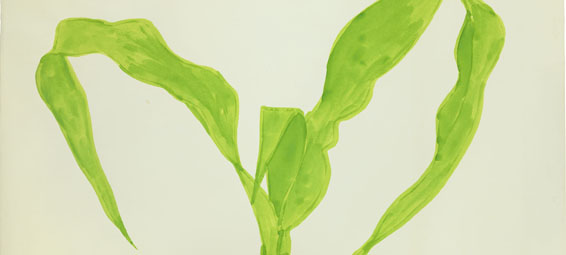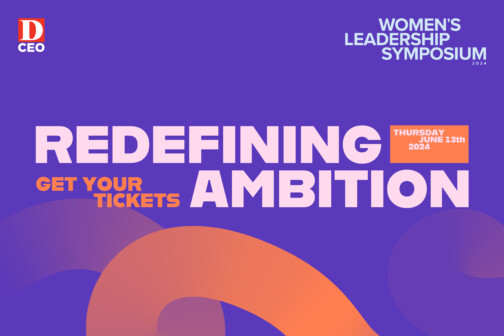In the Dallas Museum of Arts’ exhibition, “The Lens of Impressionism,” contemporaneous photography and painting are paired to draw attention to a dialogue between the media in the early days of the photographic image. There are no photographs in the Amon Carter Museum’s exhibition “American Moderns on Paper: Masterworks from the Wadsworth Atheneum Museum of Art,” but the medium is no less present. Laid out chronologically through four galleries on the second floor of the Fort Worth museum, the exhibition features work that span a crucial period in the first half of the twentieth century concurrent to the increasingly proliferation of photography. A number of interesting shifts occur during these five decades: from representation to abstraction, from paper used for sketching and experimentation to its emergence as a primary medium, from socially conscious thematic content to more elusive and subtle renderings. You can also see in these works ebbs and flows of European influence, as well as occasional articulations of a particular American sensibility And while the breadth of representative works are impressive, the collection’s thoroughness in some areas (Surrealism and Neo-Romanticism) and leanness elsewhere (the abstracts), also tells the story of institutional taste during this period — or at least the taste of one collector, the Wadsworth Antheneum, America’s oldest public art museum.

One of the pleasures of viewing the exhibition is to act as historical sleuth, moving through the timeline created by the hanging of these works and trying to pick out moments of innovation and emerging style. In William Glackens Far from the Fresh Air Farm (East Side) 1910-1911, roughly sketched characters in a New York scene rendered in goucache and crayon billow into a great mess of lines and marks as they recede towards the vanishing point. Abraham Walkowitz’s Future New York, 1912, looks almost like a set rendering from Fritz Lang’s film Metropolis, the city buildings allowed to stretch and elongate, blurring and dominating the frame and conveying the similar sense of city as an ominous, soul-shaping force. There is a single piece by Georgia O’Keeffe in this section, which highlights just how out-of-stride with her contemporaries the artist was. The elegant curving form and subtle flow of color and shadow in Slightly Open Clam Shell, 1926, would feel at home hung next to Elsworth Kelly’s work, though it precedes the abstract painter by three decades.
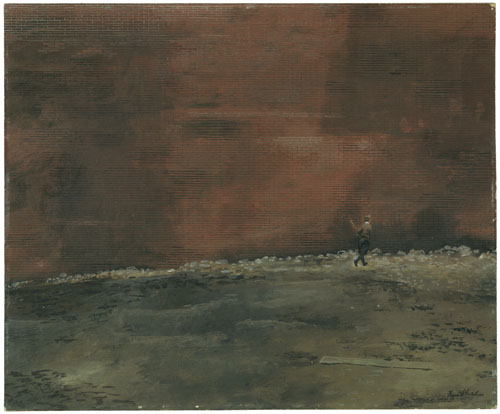
The second section of the show deals with work created during the Great Depression, and social themes dominate. In Charles Burchfield’s Looking Through a Bridge, 1938, the muddy earth and the underside of a bridge mix brown and black watercolors with graphite – tired, downtrodden tones. Trains sit in the distance; smoke bellowing out of an almost formless locomotive and moving off the canvas. In Ben Shahn’s Vacant Lot (1939), the painting’s environment, a rich and intricate red brick wall, towers over a young boy playing stick ball. The color and texture of the wall are more striking than the social themes. They are visual enveloping and fascinating to get lost in. Six pieces by Edward Hopper also belong to this period, and in the context of the contemporary work, they stand out in terms of their pallet, content, and Hopper’s characteristic use of light.

I found the Surrealism and Neo-Romantic period the least interesting, though it seems to comprise the greatest portion of the exhibit. Here the exhibit seems to meditate on how paper allowed for experimentation with ideas and form. Doodles digress into strange renderings that fuse geometric shape and human figures. There are a few bright spots. Kristians Tonny’s studies for an auditorium mural depict whimsical scenes from an imaginary fantasy, but what arrests the viewer attention are the expansive color washes, the flowing grey tones that billow and frame the figures frozen in action.

It is a bit of a disappointment that the later abstract works are so few in the exhibition, confined to only a small partitioned room at the back of the very large gallery containing surrealistic and neo-romantic works. The imbalance was recognized by the Wadsworth curators, who said they had to purchase an additional Elsworth Kelly specifically for this show in order to add more weight to this period. The two works by Kelly show a strained simplicity and capacity for a great depth of feeling. David Smith’s Untitled (formally Three Forms), 1953 contain three sculptural forms in black ink and watercolor that reference Japanese characters and which seem to shift from human forms to pure abstractions as you view the work. The work is strikingly different from the pieces earlier in the exhibition, and it is remarkable that the medium changed so drastically in a relatively short period of time. But the sensibility doesn’t seem foreign. It’s as if Kelly and Smith have finally found a pure articulation for the artistic wanderings and experimentations of the preceding decades.
Main image: Elisworth Kelly, Corn (11), 1959 (detail). Transparent watercolor on wove paper.
